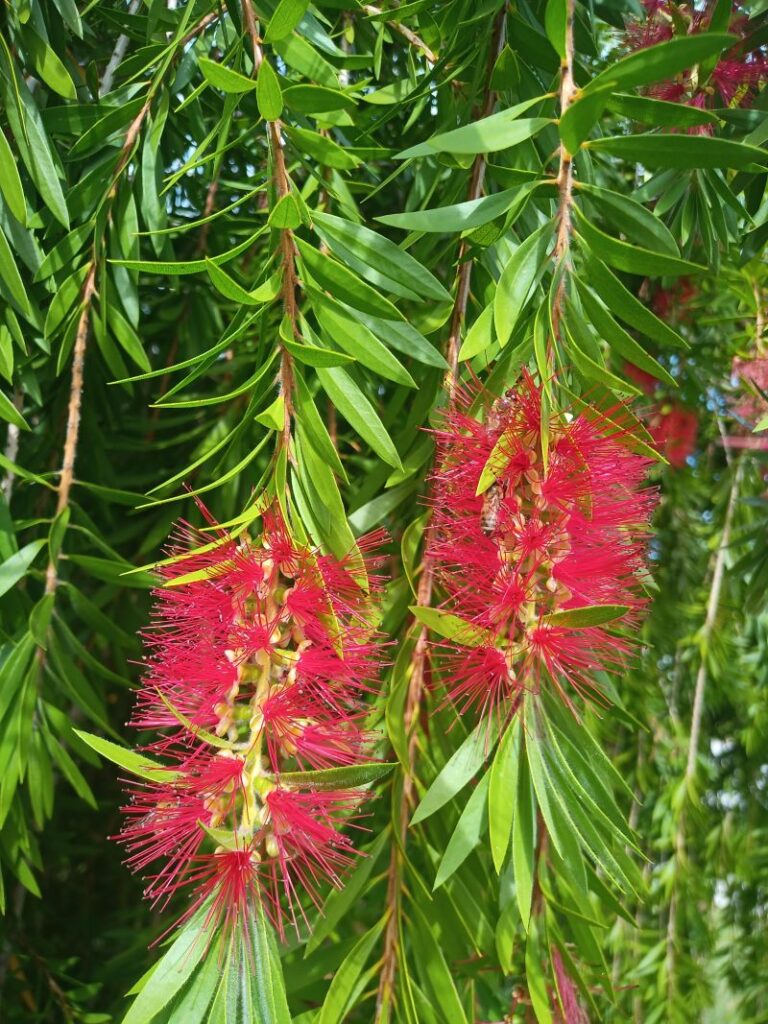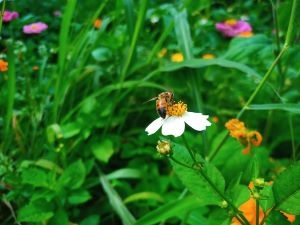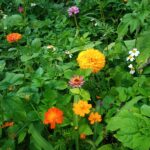How to Grow a Honey Bee Friendly Garden

Honey bees are essential to our ecosystems and agricultural systems, yet their populations are facing unprecedented challenges. One of the most effective ways to help these crucial pollinators is by creating a “Honey Bee Garden.” These gardens are designed to provide honey bees with the food, shelter, and safety they need to thrive. In this article, we’ll explore how to create a Honey Bee Garden, the best plants to include, and how your garden can support these hardworking pollinators.
Why Honey Bees Matter
Honey bees play an indispensable role in pollination, which is essential for the production of many of the fruits, vegetables, and flowers we rely on. Bees help pollinate approximately one-third of the food we eat, including key crops like apples, almonds, and cucumbers. Beyond their contribution to food, honey bees are crucial for maintaining biodiversity by supporting the growth of plants that feed other wildlife.
However, honey bee populations are in decline due to a variety of factors, including habitat loss, pesticide use, disease, and climate change. This decline threatens food security and the delicate balance of ecosystems. Creating a Honey Bee Garden is one of the simplest and most effective ways to provide these vital creatures with the resources they need to survive.
It’s important to support native pollinators, not just honey bees, as they play a crucial role in maintaining biodiversity and healthy ecosystems by pollinating a wide variety of plants that honey bees may not visit.
What is a Honey Bee Garden?
A Honey Bee Garden is a space designed to attract and support honey bees by providing them with a consistent source of nectar, pollen, and water. The goal of these gardens is to create a welcoming environment that helps honey bees thrive and encourages their population growth.
These gardens are typically full of flowering plants that bloom at different times of the year, ensuring that honey bees have a steady supply of food throughout the seasons. They also include other features, such as water sources and shelter, that help support the honey bee lifecycle.
Choosing the Right Plants for a Honey Bee Garden
When planning a Honey Bee Garden, selecting the right plants is key. Bees are drawn to plants that produce abundant nectar and pollen. The best choices for a Honey Bee Garden are native plants, which have evolved alongside local bee species and are best suited for the local environment.
Top Honey Bee-Friendly Plants for Florida

The Bottle Brush tree is a fantastic addition to Florida gardens, offering vibrant flowers that attract a wide variety of local pollinators, including bees and hummingbirds.
- Sunflowers: These large, bright flowers attract bees and offer them plenty of pollen.
- Bottle Brush Tree: Low-maintenance plant that thrives in Florida, offering bright, showy blooms.
- Sweet Vibrium: A ground cover that blooms in early summer, providing an early food source.
- Thyme: A fragrant herb that blooms in late spring and summer, attracting honey bees.
- Echinacea: With its daisy-like flowers, coneflower is an excellent nectar source for honey bees.
- Borage: This herb produces blue star-shaped flowers that are loved by bees.

The Sweet Viburnum (Viburnum odoratissimum) is a fantastic early spring nectar source in Florida, blooming as early as mid-February. Its fragrant flowers provide an important food source for pollinators, including bees and butterflies, after the winter months.
This hardy shrub thrives in Florida’s warm climate, making it a perfect addition to Florida gardens while supporting local wildlife.
This year, I planted the Burpee™ Wildflower Pollinator Mix, and it brought a lot of colorful flowers to my garden. The mix attracted plenty of pollinators like bees, butterflies, and hummingbirds, which was great to see. It’s been nice watching them enjoy the garden all season. Photos of the garden are below:
Blooming Seasons:
It’s important to plant a variety of flowers that bloom at different times throughout the year. A Honey Bee Garden should include early, mid, and late-season bloomers to ensure that honey bees have food available year-round. For example, crocus and snowdrops bloom early in the spring, while asters and goldenrod flower in the fall, providing nectar long after other plants have finished blooming.
In an effort to provide early pollen and nectar sources during a time of dearth, I planted Mexican Sunflowers (Tithonia rotundifolia). They brought vibrant, bold blooms to my garden. The bright orange flowers stood out and attracted a variety of pollinators, especially honey bees and butterflies. It’s been a joy watching these creatures thrive in the garden, and the sunflowers have definitely added some extra life to the space throughout the season.
Designing a Honey Bee Garden
Designing a Honey Bee Garden is about creating a diverse and bee-friendly environment. Start by considering the amount of sunlight your garden receives. Honey bees are most active during the day when it’s warm and sunny, so choose a location that gets plenty of sunlight. If possible, shelter the garden from strong winds, as bees need calm conditions to forage.
Bees are attracted to clusters of flowers rather than individual plants, so group your plants in large patches. This makes it easier for bees to find them and increases the likelihood of successful pollination. Additionally, try to avoid using pesticides in your garden. Chemicals can harm bees and other beneficial insects, so opt for organic or natural alternatives instead.

Water Sources and Nesting Habitats
In addition to providing food, your Honey Bee Garden should also offer water. Many people may not know this, but honey bees actually collect water as well as nectar. They use the water to drink and to help regulate the temperature in their hives.
One method to providing a water source is install a birdbath or a small fountain. It’s recommended to place stones, sticks or even wine corks for the bees to land on safely.
A Home for Native Bees

Nesting habitats are another important consideration. While honey bees often live in hives managed by beekeepers, native bees still require access to suitable nesting sites.
If you want to attract native bees, consider placing a bee hotel in your garden. These structures provide cavities for solitary bees, which are also important pollinators, to nest in.
Additional Ways to Support Honey Bees in Your Garden

While planting the right flowers is crucial, there are other ways you can support honey bees:
Companion Planting: Some plants can help attract bees while also supporting the health of other plants in your garden. For example, planting marigolds alongside vegetables can help repel pests and encourage pollination.
Avoiding Pesticides: Pesticides are harmful to honey bees. Use natural pest control methods, such as introducing beneficial insects like ladybugs, or manually removing pests from plants.
Provide Shelter: In addition to bee hotels, leaving areas of undisturbed soil or dead wood can give bees a safe place to nest.
Educate Others: Share your knowledge of honey bee gardens with your community. Encourage your neighbors to plant bee-friendly flowers, which will help support local bee populations.
Maintaining Your Honey Bee Garden
Once your Honey Bee Garden is established, it’s important to monitor its health and make adjustments as necessary. Check for signs of bee activity, such as bees visiting flowers and collecting pollen. Ensure that your plants are healthy and blooming, and make sure there is always water available.
A Honey Bee Garden needs attention throughout the seasons. In the spring, prune dead growth and add new plants if necessary. In the summer, water plants regularly to keep them healthy. In the fall, tidy up the garden and prepare it for winter by leaving seed heads and plant stems for bees to forage on.
Every Effort Counts!
Creating a Honey Bee Garden is a rewarding way to contribute to the preservation of honey bees and support local ecosystems. By choosing the right plants, providing water and shelter, and avoiding harmful chemicals, you can create an environment where honey bees can thrive. Even if you only have a small space, every effort counts. Whether you’re a seasoned gardener or just getting started, a Honey Bee Garden is an excellent way to help protect these vital pollinators for future generations.
Call to Action
Start planning your Honey Bee Garden today! With the right plants and a little care, you can create a beautiful, bee-friendly haven in your backyard. Share your gardening journey with others, and together, we can make a difference in the fight to protect honey bee populations.






